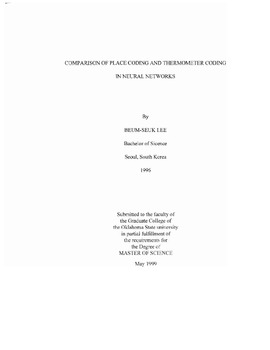| dc.contributor.author | Lee, Beum-Seuk | |
| dc.date.accessioned | 2014-09-29T15:04:24Z | |
| dc.date.available | 2014-09-29T15:04:24Z | |
| dc.date.issued | 1999-05-01 | |
| dc.identifier.uri | https://hdl.handle.net/11244/11786 | |
| dc.description.abstract | In neural network research, there have been many studies about optimization weight updating methods, and various structures of networks. However, there also has been some research on codings in neural networks used in solving the feature extracting problem. Meaningful input representation allows a network to work efficiently because of the specific way the network implements its function with given input samples. This can be explained by the Categorical Perception (CP) effect inside of a neural network. This thesis shows the significance of meaningful input representation by comparing the behavior of a network trained with two different types of input codings (place coding and thermometer coding). Tests are conducted using different numbers of hidden nodes, different numbers of hidden layers, four types of transfer functions, and four sets of real world data. | |
| dc.format | application/pdf | |
| dc.language | en_US | |
| dc.publisher | Oklahoma State University | |
| dc.rights | Copyright is held by the author who has granted the Oklahoma State University Library the non-exclusive right to share this material in its institutional repository. Contact Digital Library Services at lib-dls@okstate.edu or 405-744-9161 for the permission policy on the use, reproduction or distribution of this material. | |
| dc.title | Comparison of Place Coding and Thermometer Coding in Neural Networks | |
| dc.type | text | |
| osu.filename | Thesis-1999-L477c.pdf | |
| osu.accesstype | Open Access | |
| dc.type.genre | Thesis | |
